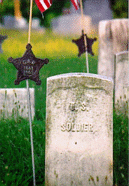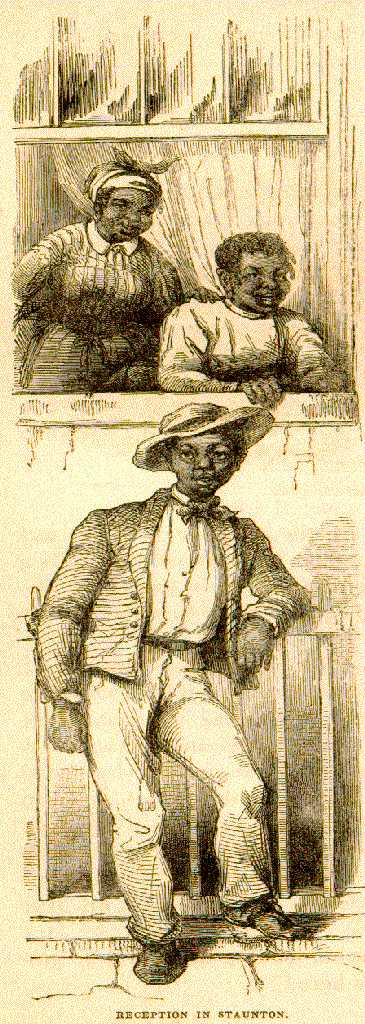 In
contrast to the "objective" architecture of the archive,
the "subjective" drama of life in the two counties springs
forth in all color and vibrancy. In the diary
of Michael Reid Hanger, "Rockbridge Rifles, Company H, 4th and
5th Virginia, Infantry," the soldier reports: "We saw some of
the enemy, in red caps and blue uniforms. I shot at one of them, and all
say I certainly killed him."
In
contrast to the "objective" architecture of the archive,
the "subjective" drama of life in the two counties springs
forth in all color and vibrancy. In the diary
of Michael Reid Hanger, "Rockbridge Rifles, Company H, 4th and
5th Virginia, Infantry," the soldier reports: "We saw some of
the enemy, in red caps and blue uniforms. I shot at one of them, and all
say I certainly killed him."

A slave
narrative reports:
"Yes they were good when you could work but
when you got sick they sold you.
"I had an aunt took fever in war time--left
her feeble-minded. She wandered off sometimes. They sold
her. they knew at big house traders was coming--kept it from her. Answer
was, when they broke news to her she said, she just as soon belomg to one
white man as another. Tole us all good by like she was going on a
visit. We never saw her no more."
Note that this drawing presents and example of oscillation
between rhetoric and philosophy. The clothes of the man,
the white suit, bow-tie, hat, mimics the rhetoric of the landed aristocracy.
The substantive truth of the his condition is slavery, as apparent
by his color. A simultaneous oscillation occurs between the man in
the foreground and his family in the window behind.
 In
contrast to the "objective" architecture of the archive,
the "subjective" drama of life in the two counties springs
forth in all color and vibrancy. In the diary
of Michael Reid Hanger, "Rockbridge Rifles, Company H, 4th and
5th Virginia, Infantry," the soldier reports: "We saw some of
the enemy, in red caps and blue uniforms. I shot at one of them, and all
say I certainly killed him."
In
contrast to the "objective" architecture of the archive,
the "subjective" drama of life in the two counties springs
forth in all color and vibrancy. In the diary
of Michael Reid Hanger, "Rockbridge Rifles, Company H, 4th and
5th Virginia, Infantry," the soldier reports: "We saw some of
the enemy, in red caps and blue uniforms. I shot at one of them, and all
say I certainly killed him."